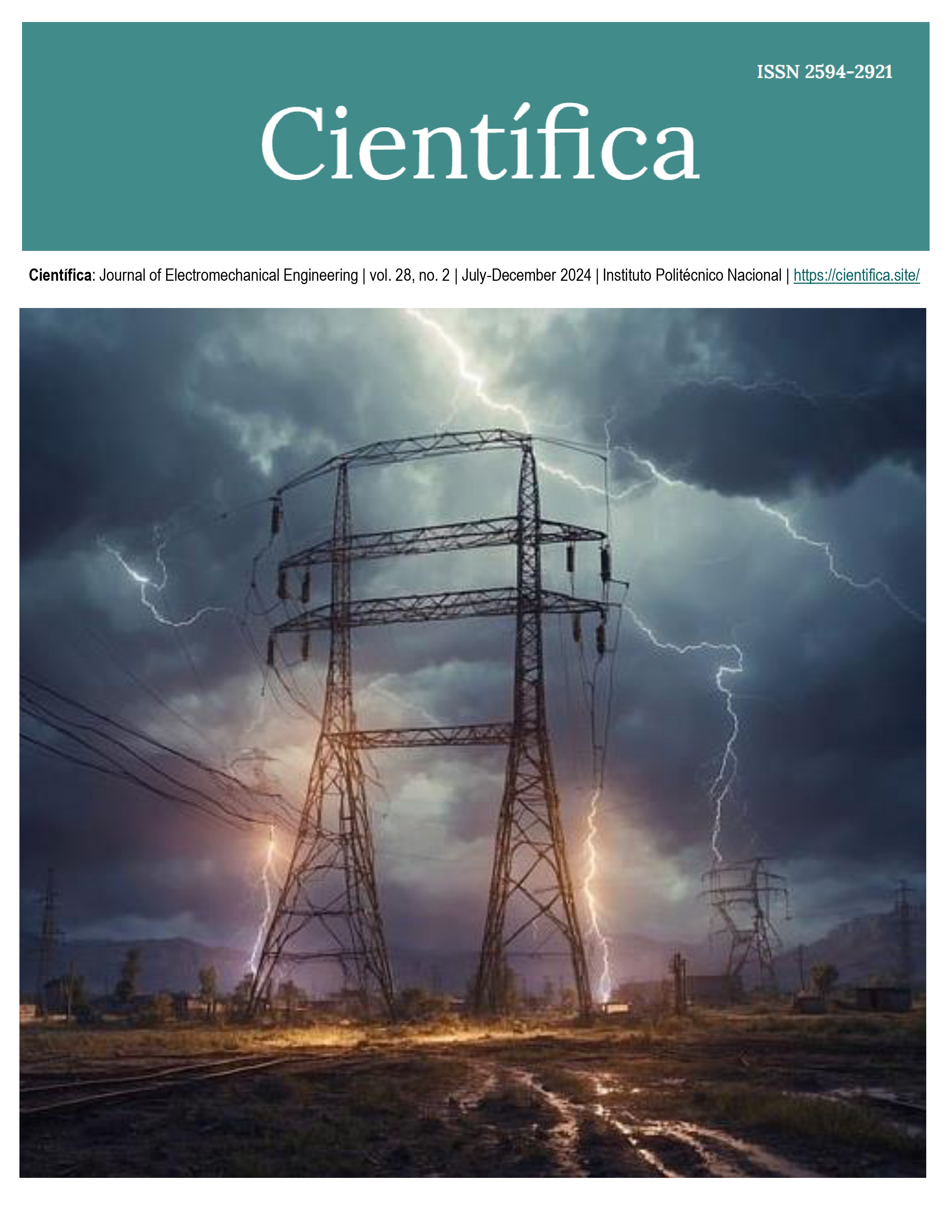Biomechanical System for Sports Reflex Training
DOI:
https://doi.org/10.46842/ipn.cien.v28n2a01Keywords:
sport biomechanics, mechatronics, computer visionAbstract
In the sports field, the improvement of reflexes is considered a crucial component during training. Various technological tools are used to train the eye-hand reaction ability, a capacity commonly associated with an athlete's reflexes. The devices used for those tasks are primarily based on remotely controlled lighting systems, combined with electronic touch sensors. However, some of these systems present physical limitations in terms of the time reaction estimation. Therefore, a biomechanical system for sports reflex training was developed through the design of a core XY Robot that implements the electromechanical and vision system to control their movements. This device uses a real-time digital video analysis, which allows the analysis of characteristics associated to the athlete's movement. The control of this robotic manipulator moves a lure that the athlete must follow to progressively train precision, speed, and accuracy of movement. The end effector is identified using a camera that constantly observes the movements made, recording the movements locally on a Raspberry PI development board for subsequent analysis. The design of this system allows for a scalable workspace adaptable to various disciplines. The entire system is simulated within the MATLAB-SIMULINK programming environment using the SIMSCAPE MULTIBODY module to estimate the discrete parameters of the transfer function of the Core XY robotic manipulator's motion kinematics. In controlled tests, it was found that the movement detection of the cart is highly influenced by ambient light. Therefore, future modifications of the system aim to address this issue. This system offers a precise solution for training reflexes in athletes, providing a more accurate approach and potentially transforming the way coaches and athletes develop reaction skills in trainees.
References
J. R. Rizzo, M. Beheshti, T. Naeimi, F. Feiz, G. Fatterpekar, L. J. Balcer, S. L. Galetta, A. G. Shaikh, J. C. Rucker, T. E. Hudson, “The complexity of eye-hand coordination: a perspective on cortico-cerebellar cooperation,”Cerebellum & Ataxias, pp. 1-14, 2020. https://doi.org/10.1186/s40673-020-00123-z
P. T. Chan, W. C. Chang, H. L. Chiu, C. C. Kao, D. Liu, H. Chu, K. R. Chou, “Effect of interactive cognitive-motor training on eye-hand coordination and cognitive function in older adults,” BMC Geriatrics, vol. 19, nº 27, 2019. https://doi.org/10.1186/s12877-019-1029-y
A. Buscemi, et al., “Role of Sport Vision in Performance: Systematic Review,” Journal of Functional Morphology and Kinesiology, vol. 9, nº 2, pp. 1-18, 2024. https://doi.org/10.3390/jfmk9020092
G. Paterson, Visual-Motor Response Times in Athletes and Non-Athletes, Stellenbosch, Sudáfrica: Departamento de Ciencias del Deporte, Universidad de Stellenbosch, 2010.
P. Maman Biswas, S. Kumar, S. Jaspal Singh, “Role of sports vision and eye hand coordination training in performance of table tennis players,” Brazilian Journal of Biomotricity, vol. 5, nº 2, pp. 106-116, 2011. https://www.redalyc.org/pdf/930/93018957006.pdf
J. F. Clark, B. E. Betz, L. T.G. Borders, A. Kuehn-Himmler, K. A. Hasselfeld, J. G. Divine, “Vision Training and Reaction Training for Improving Performance and Reducing Injury Risk in Athletes,” Journal of Sports Performance Vision, vol. 1, nº 1, pp. 8-16, 2020. https://doi.org/10.22374/jspv.v2i1.4
F. Moya-vergara, D. Curotto-Berruezo, P. Valladares-Arellano, E. Arriaza-Ardiles, T. Valverde-Esteve, J. GarcíaManso, “Evaluation of visual-motor reaction time and quality of response in rugby sevens players after the application of a neurocognitive training programme,” International Journal of Performance Analysis in Sport, vol. 19, no. 6, 2019, https://doi.org/10.1080/24748668.2019.1691814
W. Tai, R. Zhang, L. Zhao, “Cutting-Edge Research in Sports Biomechanics: From Basic Science to Applied Technology,” Bioengineering, vol. 10, nº 668, 2023. https://doi.org/10.3390/bioengineering10060668
Ferraz, P. Duarte-Mendes, H. Sarmento, J. Valente-Dos-Santos, B. Travassos, “Tracking devices and physical performance analysis in team sports: a comprehensive framework for research-trends and future directions,” Frontiers in Sports and Active Living, pp. 1-19, 2023. https://doi.org/10.3389/fspor.2023.1284086
J. Harpham, J. Mihalik, A. Littleton, B. Frank, K. Guskiewicz, “The Effect of Visual and Sensory Performance on Head Impact Biomechanics in College Football Players,” Annals of Biomedical Engineering, vol. 42, nº 1, 2014. https://doi.org/10.1007/s10439-013-0881-8
G. Theofilou, I. Ladakis, C. Mavroidi, V. Kilintzis, T. Mirachtsis, I. Chouvarda, E. Kouidi, “The Effects of a Visual Stimuli Training Program on Reaction Time, Cognitive Function, and Fitness in Young Soccer Players,”Sensors, vol. 22, 2022. https://doi.org/10.3390/s22176680
K. Burris, S. Liu, L. Appelbaum, “Visual-motor expertise in athletes: Insights from semiparametric modelling of 2317 athletes tested on the Nike SPARQ Sensory Station,” Journal of Sports Sciences, vol. 37, nº 1, pp. 15-27, 2019. https://doi.org/10.1080/02640414.2019.1698090
S. M. Kung, T. K. Suksreephaisan, B. G. Perry, B. R. Palmer, R. A. Page, “The Effects of Anticipation and Visual and Sensory Performance on Concussion Risk in Sport: A Review,” Sports Medicine, vol. 6, nº 54, pp. 1-14, 2020. https://doi.org/10.1186/s40798-020-00283-6
K. Hassan, M. M. Alhumaid, B. E.Hamad, “The Effect of Using Reactive Agility Exercises with the FITLIGHT Training System on the Speed of Visual Reaction Time and Dribbling Skill of Basketball Players,” Sports, vol. 10, nº 176, 2022. https://doi.org/10.3390/sports10110176
A. Pérez-Castilla, F. García-Pinillos, “Sports Biomechanics Applied to Performance Optimization,” Applied Sciences, vol. 14, 2024. https://doi.org/10.3390/app14093590
R. De Fazio, V. Mastronardi, M. De Vittorio, P. Visconti, “Wearable Sensors and Smart Devices to Monitor Rehabilitation Parameters and Sports Performance: An Overview,” Sensors, vol. 23, nº 4, pp. 18-, 2023. https://doi.org/10.3390/s23041856
M. F. Zupan, A. W. Arata, A. Wile, R. Parker, “Visual adaptations to sports vision enhancement training: A study of collegiate athletes at the US Air Force Academy,” Optometry - Journal of the American Optometric Association, vol. 43, pp. 43-48, 2006. https://sponet.fi/Record/4039071
L. G. Appelbaum, G. Erickson, “Sports vision training: A review of the state-of-the-art in digital training techniques,” International Review of Sport and Exercise Psychology, vol. 9, nº 1, pp. 160-189, 2016. https://doi.org/10.1080/1750984X.2016.1266376
M. Alfaro, “Métodos de sintonización de controladores PID que operan como reguladores,” Ingeniería, vol. 12, no. 1-2, 2002. https://revistas.ucr.ac.cr/index.php/ingenieria/article/view/6430
Downloads
Published
Issue
Section
License
Copyright (c) 2024 Instituto Politecnico Nacional

This work is licensed under a Creative Commons Attribution-NonCommercial-ShareAlike 4.0 International License.

